| 20 August |
• yesterday • tomorrow |
| Memorial of Saint Bernard, Abbot and Doctor of the Church |
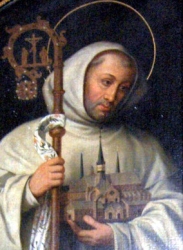
• Mellifluous Doctor of the Church
• Last of the Fathers of the Holy Church
Born to the French nobility; brother of Saint Humbeline. At age 22, fearing the ways of the world, he, four of his brothers, and 25 friends joined the abbey of Citeaux; his father and another brother joined soon after. Benedictine. Founded and led the monastery of Clairvaux which soon had over 700 monks and eventually 160 daughter houses. Revised and reformed the Cistercians. Advisor to, and admonisher of, King Louis the Fat and King Louis the Young. Attended the Second Lateran Council. Fought Albigensianism. Helped end the schism of anti-Pope Anacletus II. Preached in France, Italy, and Germany. Helped organize the Second Crusade. Friend and biographer of Saint Malachy O'More. Spritual advisor to Pope Eugene III, who had originally been one of his monks. First Cistercian monk placed on the calendar of saints. Proclaimed a Doctor of the Church by Pope Pius VIII.
Every morning Bernard would ask himself, "Why have I come here?", and then remind himself of his main duty - to lead a holy life.
1090 at Fontaines-les-Dijon, Burgundy, France
20 August 1153 at Clairvaux Abbey, Ville-sous-la-Ferté, Aube, France
1170 by Pope Alexander III
• beekeepers
• bees
• Burgundy, France
• candlemakers
• chandlers
• Cistercian Order
• Cistercians
• Gibraltar
• Knights Templar
• Queens College, Cambridge, England
• Speyer Cathedral
• wax-melters
• wax refiners
• beehive
• bees
• book
• Cistercian having a vision of Mary
• Cistercian with a beehive
• Cistercian with a chained demon
• Cistercian with a mitre on the ground beside him
• Cistercian with a swarm of bees nearby
• Cistercian with a white dog
• Cistercian writing and watching Mary
• instruments of the Passion
• pen
• white dog
• with Saint Humbeline
• On Loving God - read online or download the EPub
In dangers, in doubts, in difficulties, think of Mary, call upon Mary. Let not her name depart from your lips, never suffer it to leave your heart. And that you may obtain the assistance of her prayer, neglect not to walk in her footsteps. With her for guide, you shall never go astray; while invoking her, you shall never lose heart; so long as she is in your mind, you are safe from deception; while she holds your hand, you cannot fall; under her protection you have nothing to fear; if she walks before you, you shall not grow weary; if she shows you favor, you shall reach the goal. - Saint Bernard of Clairvaux
Love is sufficient of itself; it gives pleasure by itself and because of itself. It is its own merit, its own reward. Love looks for no cause outside itself, no effect beyond itself. Its profit lies in the practice. Of all the movements, sensations and feelings of the soul, love is the only one in which the creature can respond to the Creator and make some sort of similar return however unequal though it be. For when God loves, all he desires is to be loved in return. The sole purpose of his love is to be loved, int he knowledge that those who love him are made happy by their love of him. - from a sermon by Saint Bernard
Look at that clever calumniator! He begins by fetching a deep sigh, he affects to be humble, and puts on a modest look, and with a voice choking with sobs tries to gloss over the slander which is on the tip of his tongue One would fancy that he expressly assumed a calm and easy demeanor; for when he speaks against his brother, it is in a tender and compassionate tone. I am really hurt, says he, to find that our brother has fallen into such a sin; you all know how much I love him, and how often I have tried to correct him. It is not today that I have noticed his failing; for I should always be on my guard to speak of others, but others have spoken of it too. It would be in vain to disguise the fact; it is only too true, and with tears in my eyes I tell it to you. This poor unfortunate brother has talent, but it must be confessed that he is very guilty, and however great may be our friendship for him, it is impossible to excuse him. - Saint Bernard of Clairvaux, 24th sermon on the Canticles
https://catholicsaints.info/saint-bernard-of-clairvaux/
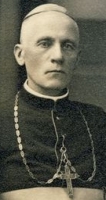
The middle of three brothers born to the peasant family of Jurgis Matulionis and Ona Juocepyte; after his mother died, his father re-married, and the couple then had seven more children. Teofilius studied at Antaliepte, Lithuania from 1887 to 1892, then Dvinsk (modern Daugpilis, Latvia) from 1892 to 1900, and then at the seminary in Saint Petersburg, Russia; he could speak Russian, Latvian and Polish. At one point he questioned his vocation, left seminary, and supported himself by teaching, but later returned to seminary. Ordained a priest of the diocese of Mohilev, Belarus on 17 March 1900.
He assisted briefly in several parishes in Latvia, and on 26 June 1900 was assigned to Latgalia, Latvia. From 1910 to 1929 he was assigned to the parish of the Sacred Heart of Jesus in Saint Petersburg, an area where Catholics were a distinct minority, and where they came under increased persecution following the Communist takeover of Russia. The Bolsheviks confiscated all churches in 1922. Father Teofilius was imprisoned from 1923 to 1925 for failure to cooperate with the Soviets in the persecution of Archbishop Jan Cieplak.
Chosen Auxiliary Bishop of Mohilev, Belarus and Titular Bishop of Matrega by Pope Pius XI on 8 December 1928, he was consecrated in secret on 7 February 1929. On 24 November 1929 he was arrested and sentenced to hard labour in a prison camp north of Arctic Circle for the crime of having had contact with people outside the Soviet Union. In prison he would often get up in the middle of the night to celebrate Mass in secret, distributing the Eucharist to other prisoners when possible. The privations of the prison broke his health; Father Teofilius was re-located to solitary confinement in a prison in Saint Ptersburg and finally turned over to Lithuania as part of a prisoner exchange.
Chosen Archbishop of Kaisiadorys, Lithuania on 9 January 1943 by Pope Pius XII. In 1946 he released a pastoral letter to his diocese; the Soviet authorities imprisoned him for ten years for actively practising his vocation. Released in 1956, he was placed under house arrest in Birstonas, Lithuania to prevent his returning to active work as a bishop. On 25 December 1957 Matulionis consecrated Vincentas Sladkevicius a bishop without the consent of the Communists. The authorities mocked him for celebrating the consecration is his kitchen; Matuliones shamed them for forcing him to such a reduced state. For his disobediance, the Communists exiled him to Seduva, Lithuania for the rest of his life. Martyr.
22 June 1873 in Alantos, Moletai, Russian Empire (in modern Lithuania)
• during a routine search of his apartment by Soviet authorities, he was given an injection by a KGB nurse and dropped dead on 20 August 1962 in Seduva, Radviliskis, Lithuania
• his body was exhumed and autopsied in 1999; tests indicated that he had been poisoned
• interred in the crypt of the Transfiguration Cathedral of Kaisiadorys, Kaisiadorys, Kaisiadorys District Municipality, Kaunas, Lithuania
• 25 June 2017 by Pope Francis
• beatification celebrated at the square of the Cathedral Basilica of Sventasis Stanislovas ir Sventasis Vladislovas, Vilnius, Lithuania, presided by Cardinal Angelo Amato
• it was the first beatification celebrated in Lithuania
• it was the first beatification of a Lithuanian martyred by Communists
You are a martyr. It is you who must bless me. – Pope Pius XI during an audience in the Vatican on 24 March 1934
It is an honor to the Lithuanian nation to have such a hero. – Pope Pius XI
https://catholicsaints.info/blessed-teofilius-matulionis/
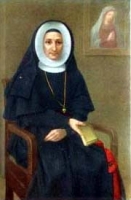
Born to a pious and educated upper class family. Though women of her day were forbidden a formal education, she learned to read and write, and much about her faith at home from her father. Being an upper class girl of the time, she grew up isolated and self-involved, but in her mid-teens she felt the hollowness of her life, and began to search for more meaning. She prayed for enlightment and received a mystical vision that led her to leave home and wander the roads, explaining the love of God to any who would listen.
At age 17 she attended a mission preached by Saint Gaspare de Bufalo, and saw the obvious changes to people who attended. She wanted to have the same effect, and with the aid of Venerable Giovanni Merlini she founded the Congregation of the Sisters Adorers of the Blood of Christ in Acuto, Italy on 4 March 1834, a woman's congregation for teaching girls. She expanded their work to teaching and catechizing women and boys. Though, due to the social mores of the time she was not allowed to speak to men, they would often gather on their own, sometimes in hiding, to listen to her teaching. Pope Pius IX assigned her to running the San Luigi Hospice in Rome, and from there she worked to expand the Adorers. The congregation experienced occasional opposition from the clergy, but always support from the laity; they ran 70 schools by Mary's death, most in small isolated towns, and over 400 by her beatification.
4 February 1805 at Vallecorsa, Frosinone, Papal States (modern Italy)
• 20 August 1866 in Rome, Italy of natural causes
• buried in the Verano cemetery, Rome
• relics venerated in Rome at the Church of the Precious Blood
18 May 2003 by Pope John Paul II at Vatican Basilica
O God, through the Congregation founded by Your servant Blessed Mary de Matthias, many young people come into contact with Your love and divine presence. Through her intercession, may we always care for the salvation of the young and teach them the joy of Your Sacramental presence in their lives. This we ask through Christ our Lord. Amen. - from Lives of the Saints II
https://catholicsaints.info/saint-maria-de-mattias/
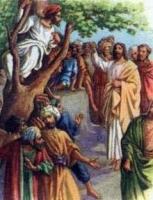
Zaccheo
• 20 April (Coptic calendar)
• 32nd Sunday after Pentecost (Byzantine calendar)
• 27 August (Martyrology of Rabban Sliba)
Mentioned in Gospel of Luke as the short tax collector who climbed a tree in order to see Jesus because he couldn't see over the crowd. Jesus decided to go to the man's house, and when the locals grumbled that Christ was friendly with sinners, Zacchaeus showed his conversion by making retribution to any he had harmed, and by giving largely to charity.
Since that's all we actually know, many legends have grown around him, including that he married Saint Veronica, that he became bishop of Caesarea in Palestine, and that he is Saint Amadour who was an early hermit in France.
innkeepers (the word publican formerly meant a collector of taxes from the public; in English it later meant the proprietor of a public house, pub or inn
Now a man there (Jericho) named Zacchaeus, who was a chief tax collector and also a wealthy man, was seeking to see who Jesus was; but he could not see him because of the crowd, for he was short in stature. So he ran ahead and climbed a sycamore tree in order to see Jesus, who was about to pass that way. When he reached the place, Jesus looked up and said to him, "Zacchaeus, come down quickly, for today I must stay at your house." And he came down quickly and received him with joy.
When they all saw this, they began to grumble, saying, "He has gone to stay at the house of a sinner."
But Zacchaeus stood there and said to the Lord, "Behold, half of my possessions, Lord, I shall give to the poor, and if I have extorted anything from anyone I shall repay it four times over."
And Jesus said to him, "Today salvation has come to this house because this man too is a descendant of Abraham. For the Son of Man has come to seek and to save what was lost." - Luke 19:2-10
https://catholicsaints.info/saint-zacchaeus-the-publican/
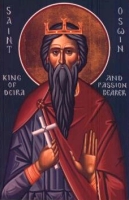
Osuine, Oswin
Born a prince, the son of King Osric of Deira in Britain. Educated by Saint Aidan. Succeeded Saint Oswald of Northumbria as king of Deira in 642. Saint Bede describes him as "most generous to all men and above all things humble; tall of stature and of graceful bearing, with pleasant manner and engaging address." While his reign was one of peace and order, there was constant political wrangling with his cousin Oswy who desired the throne and eventually had him murdered.
• murdered 20 August 651 at Gilling, Yorkshire, England on the orders of his cousin Oswy
• initially buried at Gilling
• re-interred at Tynemouth
• his gravesite was lost during the turmoil of the Viking invasions
• grave re-discovered in 1065 following an apparition of Oswine to a monk named Edmund
• relics moved on 11 March 1100
• relics moved on 20 August 1103
• following the dissolution of monasteries by King Henry VIII, relics moved to Durham, England
betrayal victims (his location was betrayed to his murders by a one of his supposedly loyal nobles)
Courtesy and humility shone from thee, O radiant Martyr Oswin. Trained by Saint Aidan as a Christian ruler, thou didst illumine northern Britain. Glory to Him Who has strengthened thee; glory to Him Who has crowned thee; glory to Him Who through thee works healings for all. - troparion of Saint Oswine
https://catholicsaints.info/saint-oswine-of-deira/
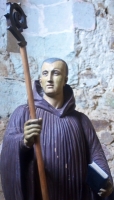
The only son of a member of the court of King Dagobert I. Educated by Saint Ouen of Rouen. Monk of Rébais Abbey at age 20. Abbot of Rébais. He spent some time travelling to various monasteries, studying their Rules, constitutions and methods of mangement. Founded Jumièges Abbey on land he received as a gift from King Clovis II. He created a Rule for the Abbey, and served as its first abbot. Imprisoned and then exiled for opposition to Ebroin. Founded the monastery of Noirmoutier. Abbot of Luçon Abbey. Returning from exile, he founded the monastery of Cunaut and a convent at Pavilly, and helped restore Quinçay. The filbert, or hazelnut, is said to have been named for him as it ripens in England around the time of his feast day.
c.608 in Gascony, France
• 684 on the island of Héri, France of natural causes
• interred in Noirmoutier Abbey
• when the monks abandoned Noirmoutier in 836 due to Viking invasion, they took Philibert's relics with them
• the relics were housed in five different abbeys during the next 39 years
• relics moved to the Saint Philibert Abbey in Tournus, France in 875
https://catholicsaints.info/saint-philibert-of-jumieges/
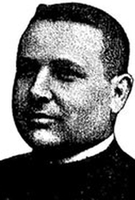
Born to a peasant family, Manuel was baptized on the day he was born. Ordained as a priest in the archdiocese of Granada, Spain on 16 July 1905. Parish priest in Alcolea, Spain. In the time leading up to the Spanish Civil War, Father Manuel came increasingly in conflict with anti–Catholic elements – he had a shotgun pulled on him for officiating at a funeral, and had to sleep in his church to run off would-be arsonists. On 20 August 1936, he was reported by Communist sympathizers to the militia who seized him along with eight other Catholics. The group was loaded into a truck, driven to a cemetery and murdered. Martyr.
26 March 1881 in Mairena, Granada, Spain
• shot, dragged to a pit, and then his skull crushed with a gravedigger's tool on 20 August 1936 at the cemetery in Berja, Almeria, Spain
• buried in a mass grave in Berja with other murdered Catholics
• 25 March 2017 by Pope Francis
• beatification celebrated in the Palacio de Exposiciones y Congresos de Aguadulce, Almería, Spain, presided by Cardinal Angelo Amato
https://catholicsaints.info/blessed-manuel-lopez-alvarez/
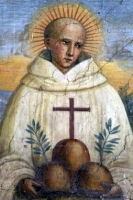
• Bernard Ptolomei
• Bernard Tolomeo
• Giovanni Tolomeo
Giovannni early changed his name to Bernard from admiration for Bernard of Clairvaux. Educated by his Dominican uncle. His father prevented Bernard from entering religious life. Lawyer. Theologian. Soldier. Politician and government official. Struck blind, Bernardo recovered his sight through the intervention of the Blessed Virgin Mary, after which he gave up worldly life to become a hermit. Accused of heresy, Bernard soon cleared his name. Priest. Founder of the Benedictine Congregation of the Blessed Virgin of Monte Oliveto (Olivetan Congregation; Olivetans). During a bout of the plague, Bernard and his monks cared for any who needed it; none of the brothers became sick.
10 May 1272 at Siena, Tuscany as Giovanni Tolomei
20 August 1348 in Siena, Italy of natural causes
24 November 1644 by Pope Innocent X (cultus confirmed)
26 April 2009 Pope Benedict XVI
https://catholicsaints.info/saint-bernardo-tolomei/
• Amadour of Lucca
• Amadour of Rocamadour
• Amadoro, Amator, Amatore
In 1126 or 1162 (record vary), the body of this saint was found, possibly incorrupt, in a tomb with indications that the person had died about 1000 years earlier. With no background information available about the body, a series of stories (and guesses) grew up around the person –
• he was Saint Zacchaeus the Publican who changed his name when he converted to Christianity
• he was a servant in the house of the Holy Family
• he was married to Saint Veronica
• he and Saint Veronica served as missionaries in the area of Bordeaux, France
• he was in Rome, Italy to witness the martyrdoms of Paul and Peter
• upon the death of Veronica, he became the first Christian hermit of Gaul with a cell at Quircy, France
• he built the Our Lady of Rocamadour shrine and pilgimage site in France
some relics enshrined at the Saint Michelotto Franciscan convent
https://catholicsaints.info/saint-amadour-the-hermit/
Orphaned when he was very small, Enrique was raised by his aunt Araceli. He grew to be a pious and committed Christian, an honest, humble and well-liked layman in his community in the diocese of Almería, Spain. Member of Catholic Action. When Communist militia came to his down in the Spanish Civil War, they ordered Enrique to renounce Christianity; he refused. They seized him, threw him into truck, drove him out of the village and murdered him. Martyr.
30 April 1908 in Terque, Almería, Spain
20 August 1936 in La Rambla de Gérgal, Almería, Spain
• 25 March 2017 by Pope Francis
• beatification celebrated in the Palacio de Exposiciones y Congresos de Aguadulce, Almería, Spain, presided by Cardinal Angelo Amato
Viva Christo Rey! (Long live Christ the King!) – Blessed Enrique’s dying words, as reported by his murderers
https://catholicsaints.info/blessed-enrique-rodriguez-tortosa/
Young layman in the diocese of Almería, Spain, he was the son of merchants and early began working as a clerk to learn the family trade. Member of Catholic Action. Martyred in the Spanish Civil War for refusing to renounce his faith.
6 January 1913 in Terque, Almería, Spain
20 August 1936 in La Rambla de Gérgal, Almería, Spain
• 25 March 2017 by Pope Francis
• beatification celebrated in the Palacio de Exposiciones y Congresos de Aguadulce, Almería, Spain, presided by Cardinal Angelo Amato
Viva Christo Rey! (Long live Christ the King!) – Blessed José's dying words, as reported by his murderers
https://catholicsaints.info/blessed-jose-tapia-diaz/
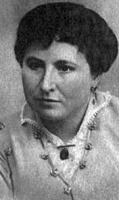
Lay woman in the archdiocese of Valencia, Spain, she was baptized on the day of her birth at her parish church of Saint Tecla. Educated by the Dominican Sisters in Valencia, Spain. Singer, musician and loved to work on embroidery. Secretary of the Catholic Women's Trade Union. Member of the Society of Saint Vincent de Paul. Martyred in the Spanish Civil War; her dying words - "Viva Christo Rey!" (Long live Christ the King!)
30 May 1887 in Xàtiva, Valencia, Spain
stabbed to death on 20 August 1936 in Picadero de Paterna, Valencia, Spain
11 March 2001 by Pope John Paul II
https://catholicsaints.info/blessed-maria-climent-mateu/
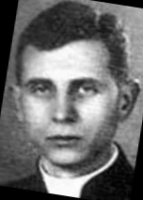
Ladislaus Maczkowski
12 June as one of the 108 Martyrs of World War II
Priest in the Archdiocese of Gniezno, Poland, serving in the parish of Lubowo. Arrested on 26 August 1940 by occupying Nazis, he was imprisoned in the Dachau concentration camp where he ministered to fellow prisoners and was abused by guards for nearly two years. Martyr.
24 June 1911 in Ociaz, Wielkopolskie, Poland
20 August 1942 in the Dachau concentration camp, Oberbayern, Germany
13 June 1999 by Pope John Paul II
https://catholicsaints.info/blessed-wladyslaw-maczkowski/
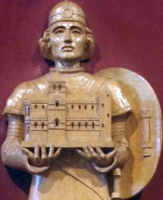
• Rögnvald Kali Kolsson
• Ragnvald Kale Kollsson
Son of Lendmann Kol Kalisson and Gunhild Erlendsdotter, and described as "elegant and accomplished". Appointed Earl of the Orkney and Shetland Islands by King Sigurd I of Norway in 1129. He made a vow to build a church in his lands; the result was the Saint Magnus Cathedral in Kirkwall, Scotland. Murdered by a group of warriors rebelling against him, his rule and his religion, and is considered a martyr in Kirkwall.
1100 in Norway
20 August 1158 in Caithness, Scotland
1192 by Pope Celestine III
https://catholicsaints.info/saint-ronald-of-orkney/
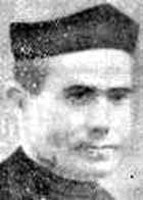
Matías of Saint Augustine
Son of Narciso Cardona and Domenica Meseguer. Soldier. Joined the Piarists on 25 June 1929, and made his solemn profession on 15 August 1934. Priest, ordained on 11 April 1935. Served in Barcelona, Spain. Martyred in the Spanish Civil War.
23 December 1902 in Vallibona, Castellón, Spain
shot on 20 July 1936 in Pigro de Coll, Vallibona, Castellón, Spain
1 October 1995 by Pope Saint John Paul II
https://catholicsaints.info/blessed-matias-cardona-meseguer/
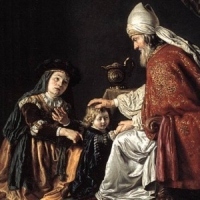
The last Judge of Israel, described in the Old Testament book of 1 Kings. The son of Elcana and Hannah, who vowed before his birth to give him to God. Delivered the Israelites from the rule of the Philistines (1 Kings 7). Believed by some to be the author of the books of Judges and Ruth, and the first 24 verses of 1 Kings. In his old age he appointed his sons judges over Israel, but they displeased the ancients, who asked him for a king, and the Lord told him to anoint Saul (1 Kings 8).
c.1132 BC at Ramatha in the moutains of Ephraim
https://catholicsaints.info/samuel-the-patriarch/
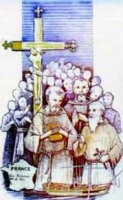
Trappist monk. Priest. Imprisoned on a ship in the harbor of Rochefort, France and left to die during the anti-Catholic persecutions of the French Revolution. One of the Martyrs of the Hulks of Rochefort.
18 June 1744 in Magnières, Meurthe-et-Moselle, France of typhus
20 August 1794 aboard the prison ship Deux-Associés, in Rochefort, Charente-Maritime, France
1 October 1995 by Pope John Paul II
https://catholicsaints.info/blessed-gervais-protais-brunel/

Benedictine Maurist priest. Imprisoned on a ship in the harbor of Rochefort, France and left to die during the anti-Catholic persecutions of the French Revolution. One of the Martyrs of the Hulks of Rochefort.
4 April 1744 in Rouen, Seine-Maritime, France
20 August 1794 aboard the prison ship Deux-Associés, in Rochefort, Charente-Maritime, France
1 October 1995 by Pope John Paul II
https://catholicsaints.info/blessed-louis-francois-lebrun/
Martyred in the persecutions of Diocletian.
• beheaded in the early 4th century in Rome, Italy
• buried in the Roman catacombs
• relics exhumed on 4 January 1846 and enshrined in the church of Santa Maria del Trebbio, near the Franciscan convent of Pollenza, Italy
• relics re-enshrined in an urn on 27 May 1889 in the Collegiate Church of San Biagio
• relics re-enshrined in May 1912
https://catholicsaints.info/saint-laura-of-pollenza/
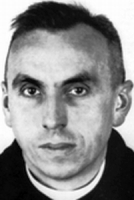
Georg Haefner
Priest in the diocese of Würzburg, Germany. Arrested by the Nazis and sent to die in the concentration camps for his faith. Martyr.
19 October 1900 in Würzburg, Germany
20 August 1942 in Dachau, Oberbayern, Germany
15 May 2011 by Pope Benedict XVI
https://catholicsaints.info/blessed-georg-hafner/
4th century imperial Roman government official in Cyrene, Africa. He witnessed the faith and martyrdom of Saint Theodore of Cyrene, which led to interest in Christianity and eventually his conversion. Retired to the island of Cyprus to live away from the empire, but was one of a group of Christians martyred in the persecutions of Diocletian.
311 on Cyprus
https://catholicsaints.info/saint-lucius-of-cyprus/
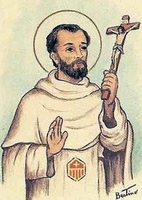
Mercedarian friar who worked to free Christians held in slavery in Spain by Muslims; he freed 185 of them in 1371.
latter 14th century
https://catholicsaints.info/blessed-francesco-matienzo/
King of Northumbria, England for 20 years after which he abdicated and retired to spent his last ten years in prayer and seclusion in a monastery in York, England.
768
https://catholicsaints.info/saint-edbert-of-northumbria/
Bernard of Candeleda
Benedictine Cistercian monk.
1155 of natural causes
Candelada, Spain
https://catholicsaints.info/saint-bernard-of-valdeiglesias/
Monk at the Saint Martin de La Rojana monastery near Cordoba, Spain. Martyred in the persecutions of Abderrahman II.
852 in Cordoba, Spain
https://catholicsaints.info/saint-christopher-of-cordoba/
Harduin
Bishop at Le Mans, France. Founded several monasteries including Notre-Dame-d'Evron.
c.662 of natural causes
https://catholicsaints.info/saint-haduin-of-le-mans/
Monk at Lobbes Abbey in Belgium. Canonist. Reluctant bishop of Worms, Germany in 1006.
Hesse, Germany
1026
https://catholicsaints.info/saint-burchard-of-worms/
Martyred with several hundred companions during the persecutions of Shapur II.
Persia
362
https://catholicsaints.info/saint-heliodorus-of-persia/
Archbishop of Conze, Basilicata, Italy.
in England
1180 of natural causes
Conze, Italy
https://catholicsaints.info/saint-herbert-hoscam/
Count of Apremont. Crusader. Benedictine Cistercian monk at Villers, Brabant, Belgium.
1263 of natural causes
https://catholicsaints.info/saint-gobert-of-apremont/
Priest. Monk in Cordoba, Spain. Martyred in the persecutions of Abderrahman II.
852 in Cordoba, Spain
https://catholicsaints.info/saint-leovigild-of-cordoba/
Spiritual student of Saint Martin. Founded the monastery of Chinon in France.
c.470
https://catholicsaints.info/saint-maximus-of-chinon/
Martyr.
in Palestrina, Italy
https://catholicsaints.info/saint-porphyrius-of-palestrina/
Mentioned in the Gorman Martyrology.
https://catholicsaints.info/saint-brogan-20-august/
Thousands of people were murdered in the anti-Catholic persecutions of the Spanish Civil War from 1934 to 1939. I have pages on each of them, but in most cases I have only found very minimal information. They are available on the CatholicSaints.Info site through these links:
• Blessed Cristòfol Baqués Almirall
• Blessed Emili Bover Albareda
• Blessed Francesc Llagostera Bonet
• Blessed Hilario Barriocanal Quintana
• Blessed Ismael Barrio Marquilla
• Blessed Magí Albaigés Escoda
• Blessed Serapio Sanz Iranzo
• Blessed Tomás Campo Marín
Benedicto Zafont
CatholicSaints.Info Portable Edition